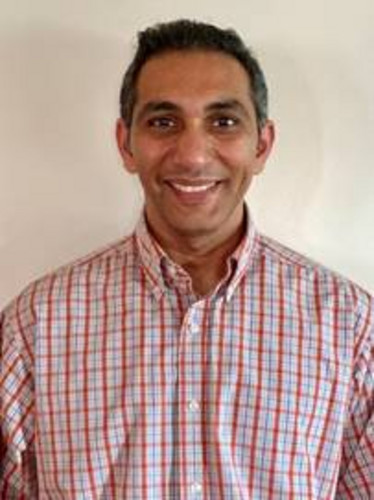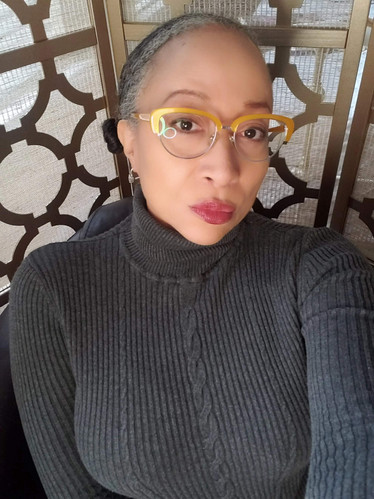
The Human Yin to the Clinical Yang
Humanizing clinical trials through patient advocacy
Even though digital platforms are making a difference, could the patients who engage with them be given a stronger voice?
Gaurav Dave and Allison Kalloo are on Medable’s Patient Advisory Council (PAC) – a patient group that advises Medable and its biopharma customers on how to improve patient access, experience, and outcomes in clinical trials. Here, they outline the barriers to engagement with the trials process and share their views on how the industry can improve its relationship with its most important stakeholders.
Meet the PAC

Gaurav Dave is an Associate Professor of Medicine, Associate Director of the Center for Health Equity Research, and Director of Abacus Evaluation Consulting at the University of North Carolina at Chapel Hill.
“Patient voices are continually lost in the ever-growing maze of the healthcare system. Not knowing what questions to ask, not understanding the medical or research jargon, not having the resources, and not participating in joint decision-making perpetuate this problem. These issues are structural and systemic. Since the historical exploitation of subjects in research – (e.g., Tuskegee study) – these concerns continue to instill distrust, reducing the odds of achieving equitable patient-centered treatment.”

Allison Kalloo is a patient recruitment specialist and the founder of Clinical Ambassador and iParticipate, Inc..
“Long before I thought to put a label on it, advocacy has been my modus operandi. But it would be unfulfilling if I were not working toward goals that benefit other people. As a longtime patient advocate and an ambassador for diversity, equity and inclusion in clinical trials, both in my Clinical Ambassador work and also as a member of the Medable PAC, I am inspired by opportunities to broaden my reach and pay it forward in tangible ways.”
How do advocacy groups benefit patients?
Kalloo: Institutional review boards and ethics boards have their place, of course, but advocacy groups make patients feel seen and heard. Patient advocacy is the human yin to the clinical yang. Patient advocacy groups are the soul of the larger clinical trial body that amplify patient voice and provide meaningful feedback to identify and reduce participation barriers.
Dave: Patient advocates foster the mission of improving lives. It is easy for the industry, the healthcare system, and the clinical providers to consume themselves in the intricacies of delivering healthcare or conducting research. Amidst that dynamic, intense, and complex landscape, patients’ voices can go unheard. Unbiased patient advocacy groups can be a critical element of the system that connects patients with the clinical research community.
Patient advocacy groups build working partnerships with the healthcare and pharmaceutical industries and change clinical research narratives. For instance, they can serve as trusted allies to ensure transparency of the clinical trial processes. Further, they can help address today’s digital divide and break down barriers to access among disparate and historically marginalized groups. Similarly, they can advocate for and foster the recruitment of a diverse group of trial participants, specifically in underrepresented and underserved populations – especially now as companies are essentially removing many of the common barriers for participation with decentralized clinical trial platforms.
Historically, have partnerships between pharma companies and patient advocacy groups been successful?
Dave: Certainly, there have been successful partnerships between pharmaceutical companies and patient advocacy groups. However, this success is dependent on transparency, ethics, and accountability. The USA’s National Health Council, which comprises various patient advocacy groups, business organizations, and pharmaceutical companies, has operationalized 38 standards of excellence. These standards range from requiring diversity to rules around fundraising to whistleblower policies to reporting. Each member organization abides by these standards of excellence to ensure prioritization of patient safety and foster health equity.
However, success between the life sciences industry and civic groups is highly dependent on trust, accountability, and commitment to meaningful stakeholder engagement.
Kalloo: I have witnessed multiple successful collaborations up close, but any substantial outcomes that were meant to benefit patients have often been wrought with frustration, effectively stemming from a power struggle and tone-deafness on the part of the industry. Patients and their advocates have been consistently made to feel as if big pharma was simply going through the motions, with no intention of following through with their recommendations. In the end, patient voices were frequently disregarded. But some companies are working to change this by deploying patients’ recommendations into patient-centric technology solutions. This shows up in patient diaries that ask more precise questions and leave less room for personal interpretation, in study tools that require less maintenance, and in wearable devices that are sleeker and less clunky.
The Tuskegee Syphilis Trial
Between 1932 and 1972, the CDC and the US Public Health Service conducted a study – arguably one of the US’ most controversial: the Tuskegee Study of Untreated Syphilis in the Negro Male. The organizations recruited African American men to participate in trials to observe the effects of syphilis in untreated patients. However, the participants were unaware of this. They were under the impression that the study, which was initially intended to last for six months, would give them access to free healthcare for conditions, including syphilis and anemia.
Though penicillin became a recognized treatment for syphilis in 1945, the trial participants were never offered the antibiotic and the study continued for a further 27 years. Concerns about the ethical soundness of the study grew following an exposé written by the Associated Press in 1972. Responding to the public’s reaction, an ad hoc advisory panel was formed to review the ethical approach taken. The members of the committee concluded that the men involved had been misled. By 1973, a class action lawsuit was filed that resulted in an out-of-court settlement. In 1997, Bill Clinton issued a formal Presidential apology.
For more information: www.cdc.gov/tuskegee/timeline.htm
What barriers prevent patients from participating in advocacy groups?
Kalloo: The most significant barriers are those of perception and the power balance. If people are going to spend precious time providing patient expertise, we want to know that it will be used. We deserve a return on our investment, too. Against the backdrop of industry’s enormous profits, the intel collected from patients should be treated with the same reward calculus. Patients are invaluable research partners, whether in formal advocacy roles or not, and should definitely be better compensated for their time and contributions across the board. Likewise, advocacy groups should not have to struggle for donations to support their programs. They shouldn’t even have to ask. Mere accolades and annual awards banquets are not enough. We are all doing meaningful work in this space, albeit in different ways. Not feeling respected by research entities can prevent patients from participating more fully and can make advocacy groups leery about providing referrals.
Dave: Take this as one example; how does a Type 2 Diabetes patient living in a rural setting, working two jobs, and suffering from food insecurity access reliable clinical research information and find time to advocate for their unmet health-related social needs? How can we create systemic change that addresses such issues? Researchers, clinicians, decision-makers, and the industry need to change the research paradigm to ensure stakeholder engagement and a human-centered approach to patient advocacy.
Like Allison says, patients are research partners, yet the current clinical landscape places the onus on them to advocate for themselves in a complex ecosystem. And that needs to change. We should think of patient advocacy as the norm and patient-centricity as foundational, with decision-making in the industry driven by contextualizing diversity, inclusion, and equity as the gold standard for its practice culture. Without these structural and systemic changes, patient advocacy will continue to lag, preventing people from actively adding their voice and value to clinical trials.
What is the best approach for improving trial accessibility?
Dave: We need to rethink trial design, protocols for the site, participant recruitment, marketing materials, dissemination plans, and feedback loops with coordinators. A significant barrier to trial success is the lack of competent study coordinators who know the clinical trial processes and protocols for implementation. Another obstacle is the trial team’s inability to recruit and retain participants (in some cases up to 80 percent). These and other barriers exist because we fail to i) standardize clinical trial staff requirements, ii) invest in training them in the intricacies of clinical trial conduct, and iii) design inclusive, equitable recruitment plans.
Equal access to participate in a clinical trial does not mean equity for all groups. For example, if a clinical trial staff creates an online marketing plan for recruitment, technically, everyone has equal access to that information. But can someone in a rural setting with broadband issues and dwindling technology infrastructure access that information? It is vitally important to consider systems and infrastructure that the research team can leverage. The team should include and invest in a robust community stakeholder engagement plan as part of recruitment. I would further argue that such a plan should be mandatory for proposals and protocols for all investigator-initiated, federal-, and industry-sponsored studies.
Kalloo: Gaurav is right – understanding that social determinants factor into study participation is pivotal. But the best way to find out how to improve recruitment and retention is to ask patients who should be invited, including them as much as possible. As an extension of that premise, I advocate that mock trials be integral to all protocols developed to collect qualitative data as early as possible in the study lifecycle while there is still pliability. Patient centricity – if it is to be authentic – is not a KPI that can be measured from the outside. Improving trial accessibility can be nuanced, especially for patients of color and other marginalized groups. But patient-centricity starts by asking the right questions of the right patients who reflect the study demographic. Collect patient intel early, properly compensate patients and advocates who weigh in, and then invest in implementing their suggestions.
How can pharma get it right?
Dave: It’s vital to take a patient-centric approach. The population, particularly communities of color, does not trust the pharmaceutical industry because of years of perceived exploitation by the healthcare industry. Therefore, it is incumbent on pharmaceutical companies to be intentional and invest in building and sustaining a relationship with the public. Be transparent and accountable. And please support patient advocacy groups with the resources that are critical to their operations, engagement, and sustainability.
Kalloo: Pharma can get it right by committing to equitable representation of people of color in every trial. By designing study protocols that are based in reality. By humanizing the clinical trial process— even in decentralized trials. And by holding space for people without advanced degrees and clinical background to contribute to how that looks and how to get it done.
After finishing my degree, I envisioned a career in science communications. However, life took an unexpected turn and I ended up teaching abroad. Though the experience was amazing and I learned a great deal from it, I jumped at the opportunity to work for Texere. I'm excited to see where this new journey takes me!



















